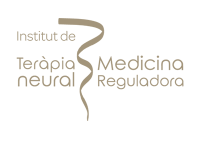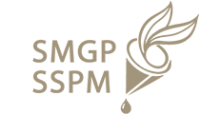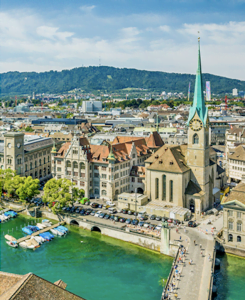Relaxation Massage
12 Minutes
There are numerous reasons to have a massage, ranging from work-related anxiety to athletic rehabilitation. Regardless of the purpose, it is essential to understand that there is a range of relaxing massage techniques that give varying benefits and outcomes.
A relaxation massage is a hands-on treatment that combines stroking, pressure, and rubbing of the skin to relax the entire body.
A person seeking to treat aching muscles would likely require a different sort of massage treatment than someone just wanting to relax. While the term “massage” typically conjures up an image of a person laying on a comfortable table while an expert performs the procedure, you can simply perform several excellent massages at home. This is a cost-effective strategy that can be performed at any time, which is crucial for athletes prepping for a race or working mothers who do not always have an hour to spar
In this article, we discuss the many aspects of spa massage relaxation therapy, how it is done, what it helps, and how it is different from other forms of massage.
The majority of massage treatments will, among many other things, relax you. The sole purpose of a relaxation massage is to relax you. This makes it one of the most comprehensive and luxurious massages available.
A relaxation massage is typically a full-body treatment including soothing music, dim lighting, and aromatic essential oils. You will receive a long, exquisite massage using a variety of massage methods, including long strokes, soft kneading and rolling of skin tissue and muscle, and repetitive side-to-side rocking. It is a passive process. You will not likely be stretched or manipulated into yoga-like poses, as you are in Thai massage. You simply lie there and accept it.
This is the treatment to choose if all you want to do is relax and be pampered.
As its names imply, relaxation massage is a type of massage therapy that concentrates on producing general relaxation, alleviating muscle tension, and enhancing blood circulation. Its principal objective is to aid the user in evading the pressures of their monotonous tasks and recouping from the difficulties of daily living. When receiving a massage for relaxation, you can anticipate the following:
- Gliding, rhythmic, long, and strokes that are very fluid.
- Deeply calming, but not excruciating, pressure
- Treatment is intended to relax and calm you, but not to address chronic pain or other intrinsic disorders.
- A therapist who additionally considers the massage atmosphere — using warm towels, calming music, and sometimes essential oils to augment the environment and the massage’s effects.
In a session of relaxation massage therapy, the massage therapist manipulates the surface layers of body tissue with light to moderate pressure. Unlike deep-tissue massage or trigger point therapy massage, it does not focus on the muscles’ connective tissue, yet it performs an excellent job of soothing fatigued muscles. Generally, the therapist works on the patient’s back, arms, neck, and legs with a soft kneading and prolonged strokes.
As with other treatments, there is an improved spa massage relaxation therapy in which the client may also receive other treatments. Below is a list of relaxing massage techniques for relaxation that you should try.
Swedish massage is the first thing that springs to mind when one thinks of a relaxing massage. To promote lymphatic system function and blood circulation, this full-body massage involves tapping, soft kneading, and long strokes aimed toward the heart. This sort of massage is great for those who are new to massage or simply wish to relieve stress after a long, exhausting day.
Warming and relaxing the muscles, hot stone massage consists of placing heated stones on certain areas of the body, like the shoulders, back, feet and legs. Once the client is sufficiently warmed, the massage therapist can begin applying slow and soft strokes to the body. They could also rub the warm stones on the back, legs, and shoulders to alleviate stress, pain, and accumulated toxins.
Aromatherapy massage promotes pleasant emotions and thoughts. This sort of massage simultaneously helps the mind and the body. During an aromatherapy massage, the practitioner employs delicate Swedish massage to the soft tissue of the user’s body as the peaceful aroma of essential oils disperses into the air to enhance the user’s journey to relaxation. The customer may also request that the oils be rubbed on their body.
Relaxation massage induces a physiological response of relaxation in the body. This is intended to slow down your breathing and heart rate to lower your blood pressure, enable you to relax your muscles, and minimize the generation of stress hormones. Massage can even stimulate the synthesis of serotonin, a brain chemical associated with emotions of overall well-being and happiness.
In addition to the calming sensations, relaxation massage offers further advantages. Massages have been demonstrated to promote circulation, which has numerous benefits, including added flexibility and brighter skin. Additionally, massage therapy can improve productivity and concentration, reduce blood pressure, and even provide a modest immune response boost.
Relaxation massage is ideal for relieving everyday stress and easing general muscle tightness. Chronic pain disorders, injuries, and similar issues are best suited for a different form of massage since they are more likely to be triggered by deeper-seated soft tissue tension.
Techniques That Promote Relaxation
Relaxation techniques vary. Common techniques are:
- Effleurage
- Kneading
- Wringing
Effleurage eases stress. Effleurage concentrates on superficial muscle soft tissues. Effleurage uses flat fingers and hands to warm muscles. Effleurage enhances muscle warmth, suppleness, and flexibility. Tissue suppleness and elasticity promote muscle mobility and relieve tightness and tension. Reducing stress relaxes.
Wringing is a useful practice for increasing relaxation. Wringing involves lifting and pulling soft tissues from the sides to the center. The wringing motion varies from firm to gentle pressure to stretch and loosen muscles. Muscle strain and knots produce restriction. Tight muscles, knots, and tension increase stress, and pain, and decrease relaxation. Wringing promotes muscle to expand and release, relieving muscle tension and knots. Muscle relaxation increases with softer knots and reduces tension.
Kneading is frequently used to promote relaxation. Kneading pulls and squeezes delicate tissues. Kneading uses forceful pressure to reach deeper muscle layers. Pulling and squeezing creates friction during kneading. Friction increases blood flow. Blood flow increases oxygen supply to the muscle, increases temperature, and nutrients to provide muscles energy and preserve their health. Temperature increases muscular flexibility, allowing it to move fully. Enhancing the range of motion and muscle energy reduces constriction, tiredness, and weakness, raising muscle relaxation.
Relaxation Massage combines the knowledge of traditional healing therapies with cutting-edge modern technology.
The relaxation massage is the most common type of Swedish massage.
Pressure
Pressure pulses are applied with care. (pressure intensity)
Rhythm
A gentle pressure, slow-paced massage (applied evenly)
Tempo/flowing strokes (PACE)
To enable you to relax, a relaxation massage incorporates soothing, lengthy, sweeping, gliding, and rhythmic strokes at a slower pace.
Sequences
Relaxing sequences are carried out.
- The purpose of this therapy is to help you relax; persistent underlying muscle knots, adhesions, or disorders are not targeted.
- A spa massage relaxation therapy is administered at a slower tempo and with light pressure.
- Therapeutic vs. relaxation massage. A Relaxation massage is not intended to address persistent muscle pain or discomfort (Therapeutic Massage is used for such conditions).
- Massage at a relaxation massage spa is intended for those who wish to focus on relaxation only.
Swedish Relaxation massage treatment varies in intensity from mild to medium to firm, although relaxation massage is gentler with the application of a lower intensity pressure.
A Registered Massage Therapist will modify the pressure as per your preference, sensitivity, and medical condition. You can choose the intensity of pressure with which you want to get the massage therapy if the pressure you desire is consistent with your medical history and has been approved by your doctor.
Not only do your choices for moderate or deep pressure matter, but also your physical well-being and condition determine it.
Remember that a relaxing massage does not have to be intense and unpleasant to be beneficial. Whether the RMT will comply with your request for gentle or deep pressure relies heavily on your present health and physical condition. It is recommended that you contact a Registered Massage Therapist to allow safe force and adjustment during your massage, as your desires and your body’s demands may not always coincide.
Precautions
Before receiving a massage, avoid heavy meals and alcohol. It’s also a great idea to consume a lot of water, which will assist your body in eliminating pollutants.
It is also recommended that you allow yourself ample time before and after the massage so that do not feel rushed.
You must always inform your therapist beforehand if you:
- You are or suspect you may be pregnant
- Medical disorders or are undergoing treatments or taking certain medicines
- Recently sustained an injury or surgical procedure
- Are allergic to everything, skin problems in particular
- Have any wounds or ulcers on the scalp?
- As this may have an impact on the type of oil and therapy you receive.
If you’re like the majority of people who are considering getting a massage for the first time, you may be seeking advice on how to proceed considering the plethora of options. Deep tissue and relaxation massages are the most common types of massage; however, the difference between the two is often misinterpreted, so you may not know which one will be most beneficial for you.
A relaxation massage often referred to as a Swedish massage, is intended to relax the recipient. The muscles are compressed in the direction of blood flow towards the heart, but with less pressure than in a deep-tissue massage. It promotes blood circulation, flexes tendons and ligaments, and provokes skin and the nervous system. This results in total mental and physical relaxation, decreased tension, improved circulation, and an immune response boost.
If your occupation needs you to sit for long periods, generating tightness in your upper back and neck, a massage session for relaxation would be appropriate. It is also beneficial for individuals with excessive levels of anxiety or stress, high blood pressure, and difficulty sleeping.
Deep tissue massage uses much stronger pressure and is not always calming, while relaxation massage uses much milder pressure to produce relaxation. To release soft tissue and muscles, the practitioner works against the direction of the muscle, as opposed to along the muscle fibers, which might produce soreness both during and after the session. This deeper pressure relaxes the muscles, lowers blood pressure, assists in the disintegration of scar tissue, and relieves long-term stress symptoms.
Deep tissue massages are beneficial for individuals with modest musculoskeletal problems like those caused by sports or accidents) in addition to individuals with chronic stress and those recovering from surgery.
Before scheduling a massage treatment, you must always consult with your massage practitioner to establish which massage technique will be most beneficial for you, as the needs of certain conditions overlap. They might offer suggestions to increase the efficiency of your session.
The kneading movements and gentle stroking over the skin can increase regional blood flow, delivering new blood to the area for better-localized nutrition and accelerating the elimination of waste and toxins.
This will enhance the local healing of injuries to soft tissues and enhance skin tone.
Decrease muscle tension. Regular relaxation massage can relieve muscle tension that may be caused by posture issues as a result of sitting for extended periods. The application of gentle yet firm pressure to certain shoulder muscles, for instance, will help to alleviate any stress or tightness in this area. Postural issues are cumulative, and massage treatment is one of the most effective preventative measures, so to speak.
Regular relaxation massages can also significantly less muscle soreness caused by excessive use during exercise. The effects of stroking and kneading on muscle fibers aid in dispersing/removing lactic acid buildup, hence lowering fatigue, discomfort, and recovery time.
Improves muscle pain. A qualified massage therapist can differentiate and identify muscle groups or individual muscles to relieve localized discomfort. As the various layers of muscles are triggered and the body’s extremities are managed fully, the body starts to relax and eventually open up more freely. Improved circulation lowers local inflammation and reduces weariness, pain, and boosts energy levels.
Relieves depression and anxiety. Depression, stress, and anxiety have become an issue in the West in the twenty-first century. These diseases are responsible for the great majority of mental illnesses in the general population. Through the creation of a tranquil environment, the therapeutic benefits of skin-to-skin contact, and the analgesic properties of massage, this therapy can reduce the number of symptoms of depression and anxiety. An individual’s overall health can be enhanced.
Better sleep. Relaxation massage soothes the client and offers stress relief and a sense of serenity, which can help the individual fall asleep more easily, rest more deeply, and experience fewer interruptions throughout sleep. In addition to relieving postural stress and localized pain, massage therapy makes sleeping more comfortable.
Enhances Immune response. By lowering blood pressure and stress hormones, the body is better able to direct its immunological response to more effectively ward off disease or infection.
Reduce Muscle Soreness Post-exercise. Massage alleviates musculoskeletal pain for all individuals, from sportsmen to the elderly. By accelerating the clearance of exercise-induced toxins from the muscles, your muscle soreness will lessen rapidly. If you’re experiencing pull-up pain after exercising? Don’t let it frustrate you. A Fitness Recovery Massage will aid you in relieving this discomfort and return you to pain-free activity.
Reduces Joint Swelling. By working on the muscles around a joint, massage can enhance the joint’s range of motion and cumulative strength and stability.
Lymphatic and Circulatory Systems. By enhancing lymphatic drainage, massage lowers the edema caused by strains, sprains, and other ailments. By stimulating the vascular system, lymphatic massage promotes blood circulation to the treated tissue. Due to the proximity of the lymphatic system to the systemic circulation, the massage will relieve pain and swelling by enhancing lymphatic flow.
Hormonal/Endocrine. Cortisol, which is a consequence of pain and stress, can be decreased with remedial massage. Massage also induces an increase in dopamine and serotonin levels which improves mood, promotes relaxation, and aids in pain relief. The subsequent effect is decreasing anxiety while improving sleep, focus, and energy levels.
Relax! Enjoy Life. Everyone feels stress and worry when life becomes overwhelming. Perhaps you should, too! The famous and wealthy use massage to remain relaxed and revitalized.
Relaxation is a term that differs from individual to individual. One may equate it with a Swedish massage, while others might prefer a deeper pressure on their muscular layer. Consequently, it is essential to work with a professional whose style matches the kind of massage you want.
A relaxation massage practitioner is certified in the essential Swedish relaxing massage techniques, such as circular friction massage, effleurage, tapping, vibration, and kneading. In addition to being highly talented, they also know how to behave professionally on the job. They recognize that every client has unique preferences, so what appears to work for one service user may not function properly for another. This attitude has never failed them in satisfying client expectations.
Qualification is essential when searching for a therapist that can deliver an unforgettable relaxing massage. The minimum skill requirement needed to work as a practitioner is a Certificate IV in Massage Therapy, which must be possessed by the candidate. Also, check that they possess the following characteristics:
- Friendly
- An attentive and articulate communicator
- Empathetic
- Organized
- Asserts excellent personal hygiene
FAQs
Which Massage Is The Most Relaxing?
Even though Swedish massage therapy is the most prevalent form of relaxation massage, it is not considered the most soothing because many individuals may prefer aromatherapy massage or hot stone massage. Unquestionably, the most soothing relaxation massage is one that relieves tension and restores equilibrium to the body, mind, and emotions.
What Exactly Is Meant By The Term “Full-Body Relaxation Massage”?
A full-body massage is a form of massage that includes the hands, arms, neck, back, feet, and legs. Various massage methods can be used to perform a full-body massage.
HOW SENSES CAN HELP WITH Wellness
Senses is a leading provider of luxury addiction and mental health treatment for affluent individuals and their families, offering a blend of innovative science and holistic methods with unparalleled individualised care.
A UNIQUE METHOD
successful and proven integrative holistic conceptOur program consists of treating only one client at a time individually designed to help you with all the problematic aspects of your life. All individual treatment sessions will be held at your private residence.
more infoYour program is designed based on your personal needs. The team will exchange daily information and adjust the schedule as we go. Our therapists will work with you treating integrative not just the symptoms and goes beyong your stay to ensure lasting success.
more infoOur biochemical imbalance can be affected by diet and stressful life events, but it often goes back to genetics and epigenetics. We do specific biochemical laboratory testing to determine an individual’s biochemical imbalance. Combining the results of the lab tests with anamnestic information and clinical tests, we prescribe an individualized and compounded vitamin, mineral, nutrient protocol to help recover from various disease states.
more infoOur experts combine the best from psychological treatment, holistic medicine to support you individually and providing complementary therapies all coordinated from one source working complementing each other integrative.
more infoUsing latest cutting-edge technology-based therapies such as Neurofeedback, tDCS, and SSP, we can track the biological patterns of your body, giving us valuable insight into your health and well-being as well support your brain and body performance and recovery with neuromodulation.
more infoOur chef and nutrition specialist will design your personalized diet plan supporting your body & mind recovery as well as helping with weight management. Nutrition workshops and mindful eating sessions will help you to maintain a healthy lifestyle.
more infoWellness TREATMENT LASTING APPROACH
0 Before
Send Request
0 Before
Define Treatment Goals
1 week
Assessments
1-4 week
Integrative Holistic Therapies
5-12 week
Aftercare
12+ week
Refresher Visit
Wellness Insights
latest news & research on Wellness
Stress Management
Stress management isn't a magic wand that makes stress vanish. Instead, it's a toolkit full of strategies and techniques that help you handle stress better
read more
Leadership Burnout
Leadership burnout, often termed executive burnout or executive stress syndrome, encapsulates the exhaustive toll that high-stakes leadership roles take on individuals
read moreAccreditations





























































